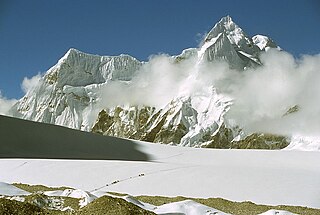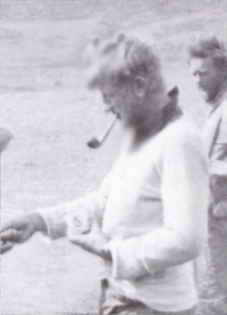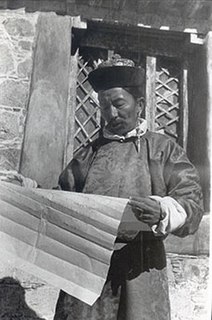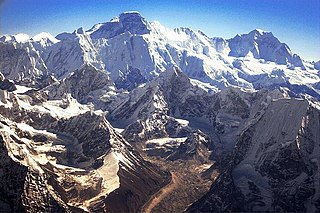1950 Houston–Tilman exploration of Solu Khumbu

The British Joint Himalayan Committee, successor to the Mount Everest Committee, was given permission for an expedition to explore the region north of Annapurna – Annapurna IV, Manaslu and Himalchuli – at the same time as the French attempt on the mountain itself. Bill Tilman, the leader, was returning home after the expedition when he happened to meet Oscar Houston, an American lawyer, in Kathmandu. Houston was planning a trekking holiday in Nepal with his son and two family friends, Betsy Cowles and Anderson Bakewell, to explore the Solu Khumbu valley just south of Mount Everest. Houston had met Tilman in 1936 when his son, Charlie Houston, had participated with him in the British–American Himalayan Expedition to Nanda Devi and he invited Tilman to join the party. Despite his reservations about what was planned – Oscar was sixty-seven, though very active for his years, and, moreover, Tilman had never been on an expedition that included a woman – Tilman grasped the opportunity. Previous Everest explorations from the north, particularly the 1921 expedition and the 1935 expedition, had identified a theoretical route up the Western Cwm but no one had been able to see if it was actually feasible. [10]

On 29 October 1950 the party of five met up at Jogbani, the railhead on the India–Nepal border. With six Sherpas from Darjeeling they went by road to Dharan where they took on eighteen local porters for the trek via Dhankuta [note 2] to the Arun River, which they crossed in a dugout canoe, and then trekked beside the Dudh Kosi river to Namche Bazaar. They found the village had prospered because it had been a trading point with Tibet, over the Nangpa La pass. Also Sherpas based in Darjeeling who were recruited for mountaineering expeditions would remit home some of their earnings. From Namche Bazaar, Charlie Houston and Tilman went ahead with four porters and arrived at Tengboche Monastery on the Imja Khola where they were the first Western visitors. Tilman found the monastery "incomparably more beautiful and less austere" than Rongbuk Monastery in Tibet, familiar from earlier Everest expeditions. They then went further up the valley to just below the snout of the Khumbu Glacier. [11] [12] Cowles wrote of Tengboche "Our days at the lamassery were a delight, the beauty of the scene around us and the warm happy spirit of the place itself combining to make our stay there something never to be forgotten. ... The head lama, a young man of about sixteen, received us and we sipped Tibetan tea together in a ceremony in which chanting featured and a strange sort of rhythmic music from horns, cymbals, bells and drums. ... Each evening was especially memorable for, after the sun had set, the great rock face would go on blazing away long after the rest of the mountain world was in darkness around us." [13]


The first time Tilman and Houston ascended the Khumbu Glacier to about a mile from the Lho La they failed to see the gap to the Western Cwm so narrow was the entrance. However, the next day they found the opening with no difficulty. [14] With only one more day before they would have to start their return their only means of further reconnaissance was to climb Kala Patar, 18,192 feet (5,545 m), the side peak of Pumori. Because Houston was not yet acclimatised they had to stop about 300 feet (91 m) below the top from where Tilman took a crucial photograph. The upper part of the Western Cwm was hidden and much of the southern side of Everest was obscured by Nuptse – what view there was shown a probably unclimbable steep rocky ridge dropping from near the summit of Everest and possibly leading to the South Col. [note 3] If there was an easier ridge behind it and further up the Cwm they thought it might not be possible to reach it. Regarding the Khumbu Icefall where the glacier drops steeply from the Cwm, they decided a way through could be forced. [15] [16] [17]
Mindful of the revolution in Nepal and the Korean War, after their return Cowles wrote "Against the dark and troubled background of the uneasy times in which we live, our days in eastern Nepal remain a happy memory towards which our thoughts constantly return in joy and gratitude". [18]















